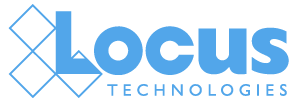The Top 10 Capabilities of Water Management Software in 2025
Discover the top 10 features that water utilities should prioritize when selecting modern water management software.
Discover the top 10 features that water utilities should prioritize when selecting modern water management software.
The EPA set a course of action for addressing PFAS in drinking waters. Attention is turning to industrial and municipal wastewaters.
Industrial water reporting tools are a mission-critical component of environmental compliance and resource management strategies.
Locus wastewater management software is an essential tool in helping facilities stay compliant, reduce risk, and operate more efficiently.
The ability to unify, visualize, and act on information across platforms isn’t a luxury—it’s now the baseline for EHS software.
Locus has been recognized once again by Verdantix, this time in the Buyer’s Guide: Environmental Compliance Software (2025).
Some companies have trusted their sensitive environmental data to Locus Technologies for more than two decades!
Our collection of Locus Water apps includes tools to streamline the monitoring, analysis, distribution, and reporting of produced water.
Gain a strategic compliance tool. Complement your Locus water data management system with the Service Orders app.
Top 5 ways Locus Water Quality Monitoring Software helps utility companies resolve challenges with centralized, reliable, & actionable data.
Locus Technologies » Locus Platform » Page 4
299 Fairchild Drive
Mountain View, CA 94043
P: +1 (650) 960-1640
F: +1 (415) 360-5889
Locus Technologies provides cloud-based environmental software and mobile solutions for EHS, sustainability management, GHG reporting, water quality management, risk management, and analytical, geologic, and ecologic environmental data management.
